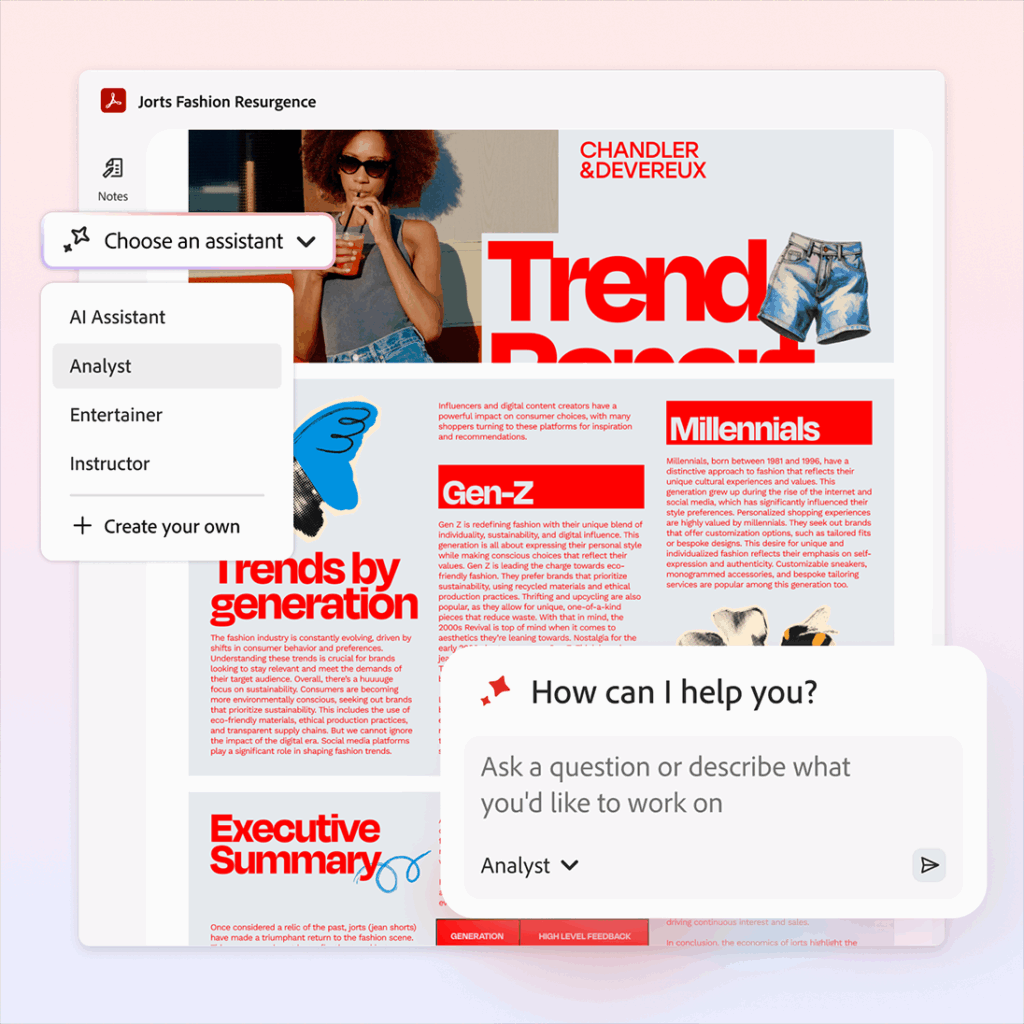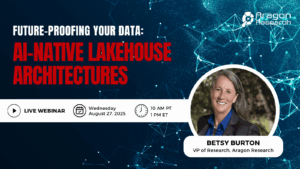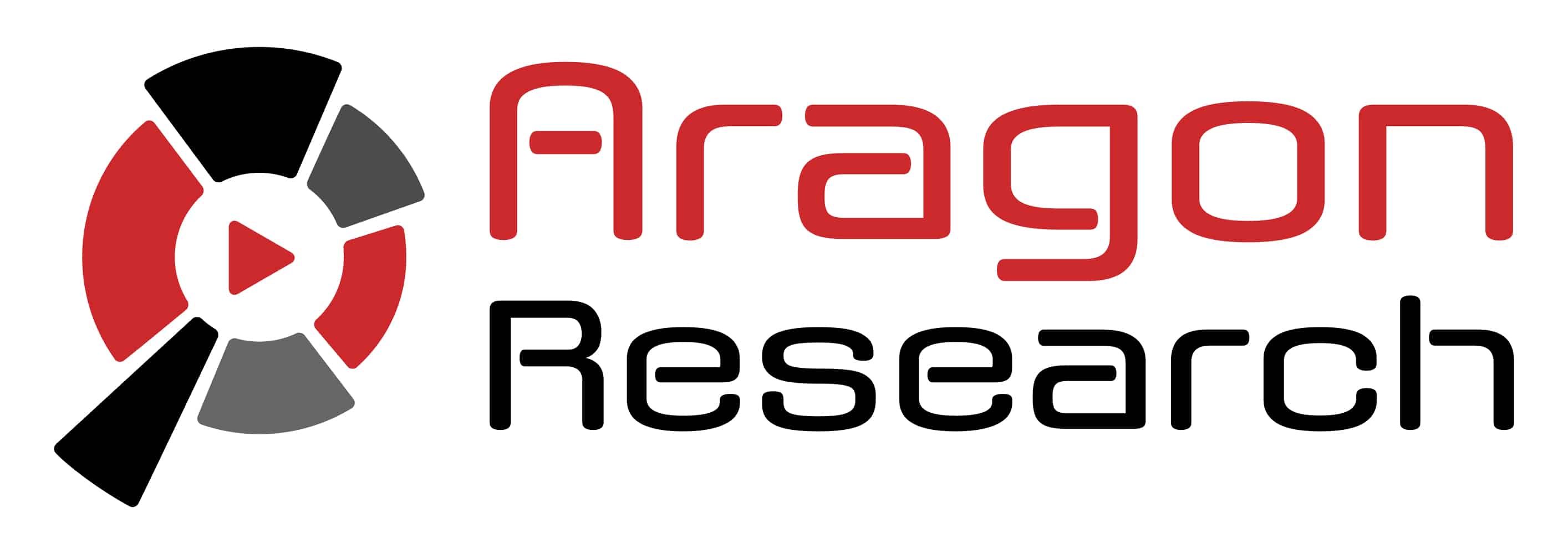Adobe’s New AI-Powered Acrobat Studio Will Challenge Microsoft Copilot

Adobe’s New AI-Powered Acrobat Studio Will Challenge Microsoft Copilot
The humble PDF has been the cornerstone of digital documents for decades, a reliable but largely static container for information. That era is now decisively over. Adobe, the creator of the PDF, has just launched Acrobat Studio, a new offering that transforms the ubiquitous document format into a dynamic, AI-powered hub for productivity and creativity. This blog overviews the Adobe Acrobat Studio announcement and offers our analysis.
Why Did Adobe Announce Acrobat Studio?
Adobe’s announcement on August 19, 2025, introduced Acrobat Studio as a first-of-its-kind destination that unifies Adobe Acrobat, Adobe Express, and new AI agents. The goal is to move beyond simple document viewing and editing into a comprehensive environment for content creation, collaboration, and insight generation.
The core of this new offering includes PDF Spaces, which allow users to group collections of files and websites into conversational knowledge hubs. Within these spaces, users can deploy customizable AI Assistants to synthesize information, answer questions, and generate ideas based on the provided content. Crucially, Acrobat Studio integrates the content creation capabilities of Adobe Express, enabling users to seamlessly move from analyzing information with AI to creating polished reports, presentations, or infographics using tools like the Firefly generative AI engine, all within a single platform.
Analysis
From an Aragon Research perspective, the launch of Acrobat Studio is a strategic masterstroke by Adobe. This is not merely an incremental product update; it is a fundamental redefinition of Adobe’s role in the enterprise and a direct challenge to the new generation of competitors and also the old. Aragon views Adobe Acrobat Studio as a direct challenge to Microsoft 365 Copilot.
First, Adobe is leveraging its massive, entrenched user base—and the trillions of PDFs in circulation—to create a powerful and defensible AI ecosystem. While numerous startups offer AI-powered document summarization and Q&A, none have the native integration and distribution channel that Adobe possesses with Acrobat. By building AI directly into the workflow where knowledge work already happens, Adobe is creating a sticky platform that will be difficult for point solutions to disrupt.
Second, the concept of customizable AI Assistants within PDF Spaces represents a significant step toward practical, agentic AI in the enterprise. The ability to assign roles like “analyst” or “instructor” moves beyond generic chatbots to create purpose-built agents that can reason and provide context-specific insights. This transforms a passive document repository into an active environment for knowledge discovery.
Adobe wants to target Canva but it is really an alternative to Microsoft Copilot
By bundling Adobe Express Premium within Adobe Acrobat Studio, Adobe is creating a seamless “insight-to-creation” workflow. This move attempts to counter Canva by integrating powerful design tools into the productivity suite. However, with 170 million daily active users, nothing Adobe does is going to slow down the growth of Canva, mainly due to Canva’s extensive features and its total focus on ease of use.
The real target to us is Microsoft Copilot. With Adobe Acrobat Studio, an enterprise user can now analyze a set of financial reports with an AI Assistant and immediately generate a board-ready presentation using branded templates without ever leaving the Acrobat Studio environment. This effectively makes it very simple to understand documents – and with customization the document understanding can be tailored.
An AI Content Assistant for the rest of us
The Content Assistant that is closest to what Adobe is offering is Box.com with its Box AI offering. We feel this is a trend and more content management providers will need to respond to this offering. While the ability to create content is important, so is the ability to understand content and summarize documents out of the box. With the ability to customize the Assistant the sky is the limit.
Bottom Line
Adobe’s launch of Acrobat Studio marks the most significant evolution of the PDF since its inception. The company is successfully transforming its flagship document product into an all-in-one, AI-powered workspace that unifies productivity and creativity. This move solidifies Adobe’s position in the enterprise and sets a new standard for how organizations interact with their most valuable asset: their information. For enterprises, the message is clear. This is not a trend to monitor, but a platform to evaluate immediately for its potential to drive significant productivity gains and streamline complex information workflows.
UPCOMING WEBINAR

AI Contact Center and the Agentic Era: What You Need to Know
The age of AI is no longer a future concept; we have officially entered the Agentic Era, where intelligent agents are becoming core members of your contact center team. This fundamental shift introduces a powerful new dynamic, with digital and human agents working side-by-side to redefine customer engagement and operational efficiency. In our webinar, Aragon Lead Analyst Jim Lundy will help you understand exactly what you need to know about this transformative period. We will equip you with the actionable insights and strategies you need to prepare your enterprise for this evolution.
Key Trends being covered:
• The current state of Contact Center – and how AI is shaping it
• The Agentic Agent Era and how Contact Centers will leverage it
• Best Practices for gaining a competitive advantage
Register today to ensure your organization is ready to lead the charge in this new era of intelligent customer service.

Future-Proofing Your Data: AI-Native Lakehouse Architectures
As data environments evolve, so too must their underlying architectures. This session investigates how AI-native lakehouse architectures are key to future-proofing your data. We’ll cover why embedding AI capabilities at an architectural level is becoming important for scalable analytics and timely insights, providing a framework for designing a lakehouse that is not just compatible with AI, but inherently designed for it.
- What defines an “AI-native” lakehouse architecture?
- What are the key architectural components of a truly AI-native lakehouse?
- How do AI-native lakehouse architectures contribute to long-term data governance, scalability, and adaptability?

Have a Comment on this?